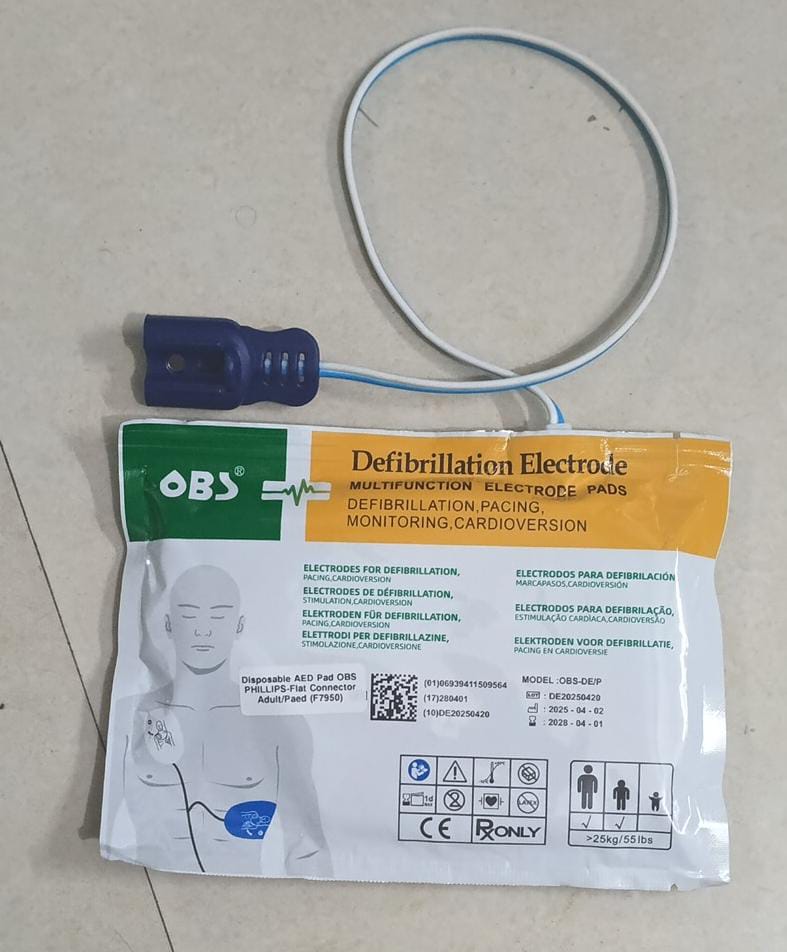Product Description
Philips AED pads are essential accessories for Philips HeartStart Automated External Defibrillators (AEDs), designed to deliver electrical therapy to individuals experiencing sudden cardiac arrest. These pads are crucial for the AED's function, as they provide the connection between the device and the patient's body.
Here's a description of Philips AED pads, highlighting their key features and types:
Key Features:
- Adhesive Gel: Philips AED pads feature an adhesive gel that ensures proper and secure adhesion to the patient's skin. This is vital for effective transmission of electrical energy to the heart and to maintain electrical conductivity during the rescue.
- Pre-connected: Many Philips pads, particularly the SMART Pads, are designed to be pre-connected to the AED, allowing for quick and easy application during emergency situations.
- Clear Markings and Placement Guides: The pads come with clear anatomical markings and illustrations to indicate proper placement on the patient's chest, guiding rescuers through the application process.
- Single-use and Disposable: For hygienic and safe operation, Philips AED pads are single-use and disposable, requiring replacement after each rescue or if the adhesive has been exposed.
- Integrated Solutions (SMART Pads Cartridge): Some Philips AED models, like the HeartStart OnSite and FRx, utilize a cartridge system for their "SMART Pads." These cartridges contain a pair of adhesive pads and seamlessly click into the defibrillator, providing an integrated solution.
- SMART Technology: Philips' "SMART Pads" are designed to interact with the AED's "SMART Analysis" system. This allows the AED to detect when the pads are placed on the patient and adapt its voice instructions to the rescuer's actions and pace. In some cases, like with the HeartStart FRx SMART Pads II used with an Infant/Child Key, they can even adjust the energy delivered for pediatric patients.
- Shelf Life: Philips AED pads typically have a shelf life of at least two years (or more, depending on the model and type), indicated by a "use-by" date on the packaging. It's crucial to replace expired pads as their adhesive and conductivity may degrade.
- Durability: The pads are often designed to be robust and resist drying out if stored properly within their sealed packaging.
Types of Philips AED Pads:
Philips produces different types of AED pads, primarily categorized by the patient's age/weight and compatibility with specific AED models:
It's crucial to ensure that the correct type of pads is used for the specific Philips AED model and patient type to ensure effective and safe defibrillation. Always check the AED model and the pad's compatibility before use, and regularly monitor expiration dates.


